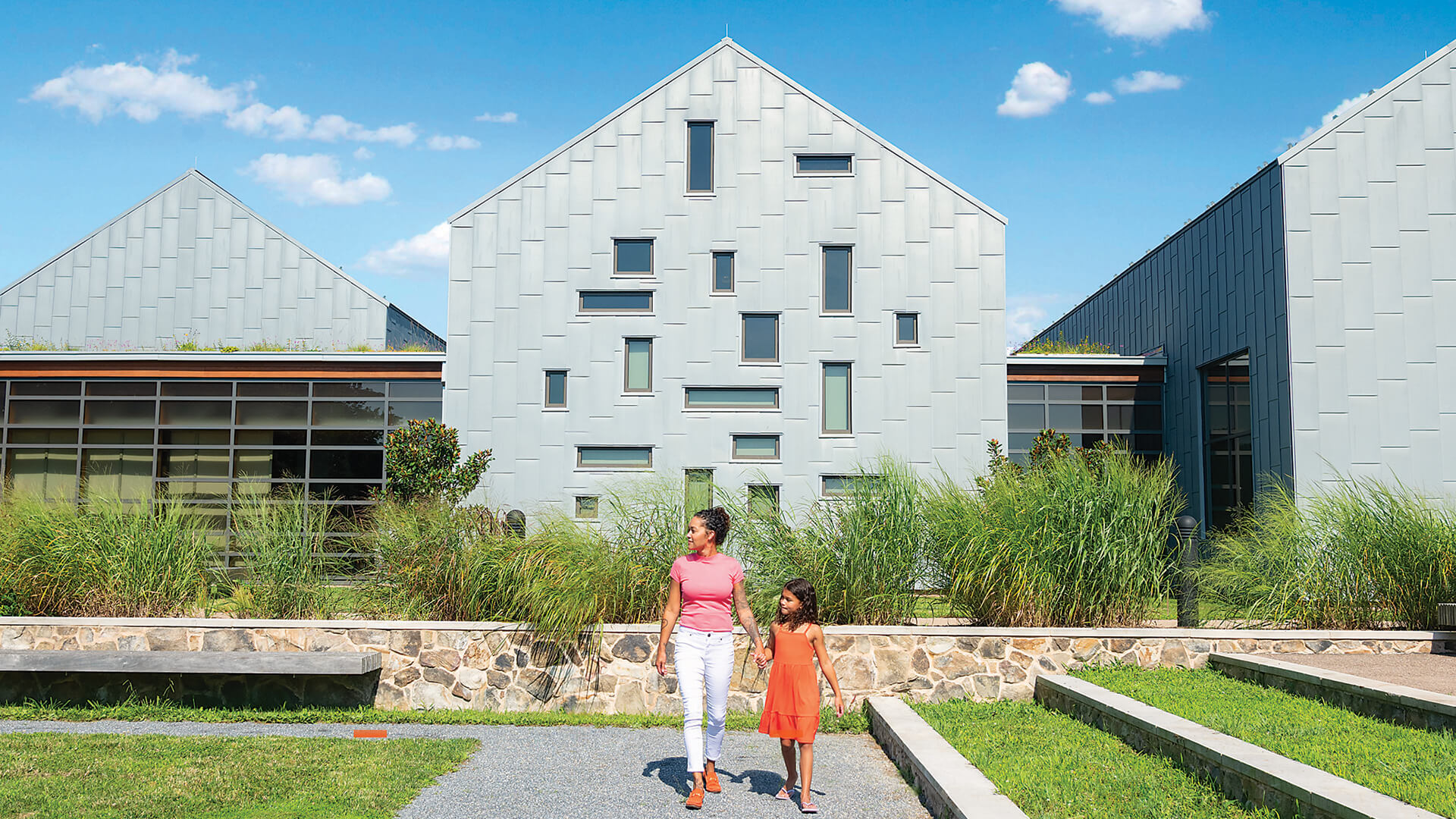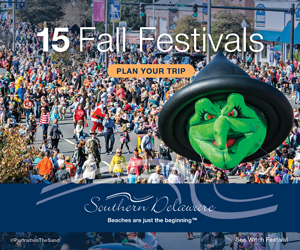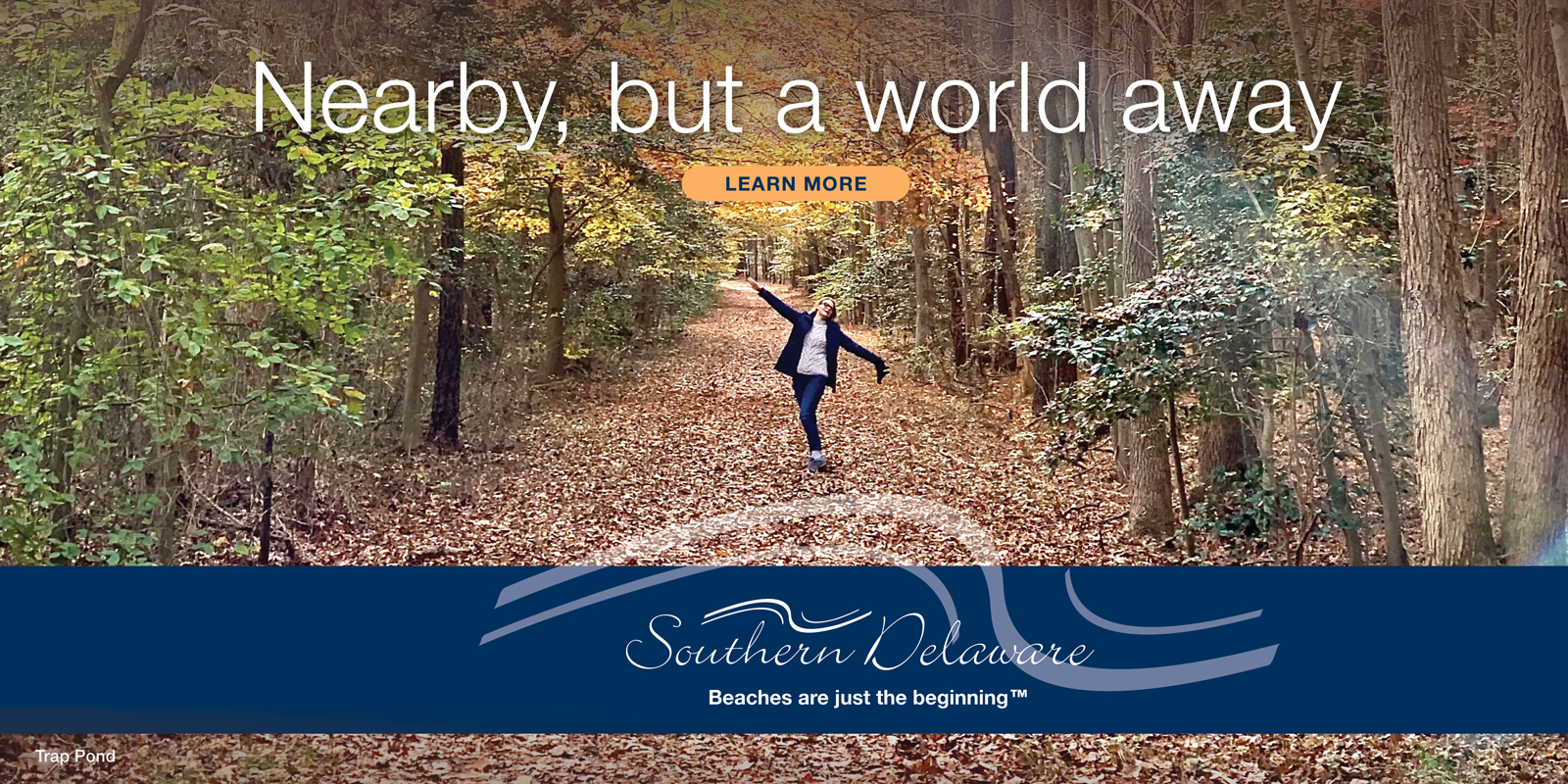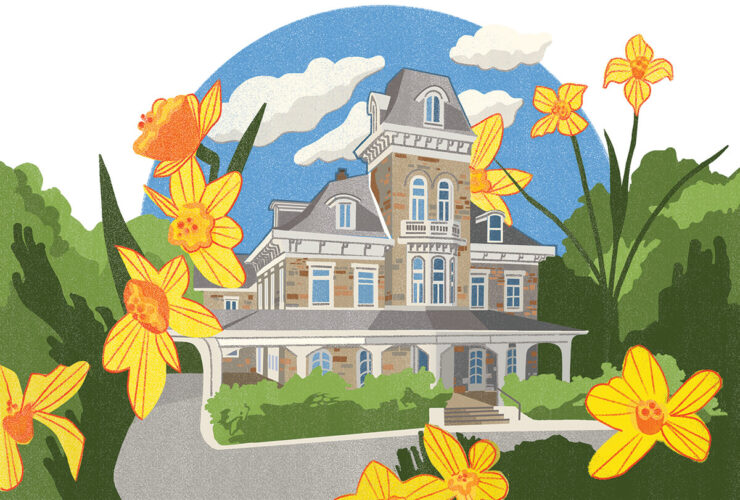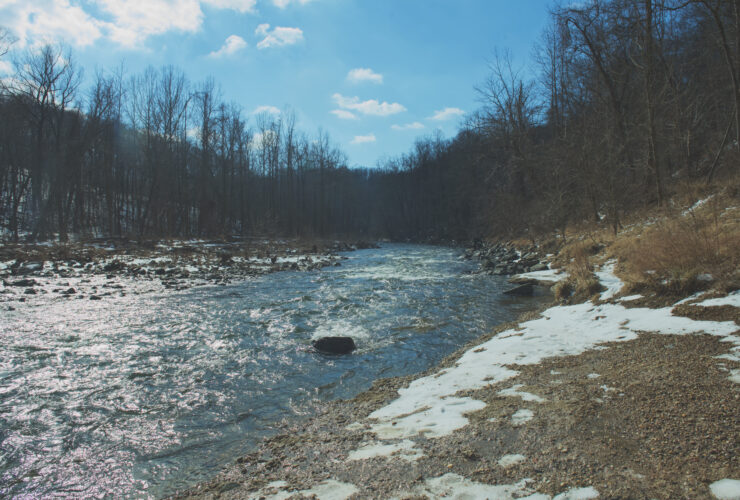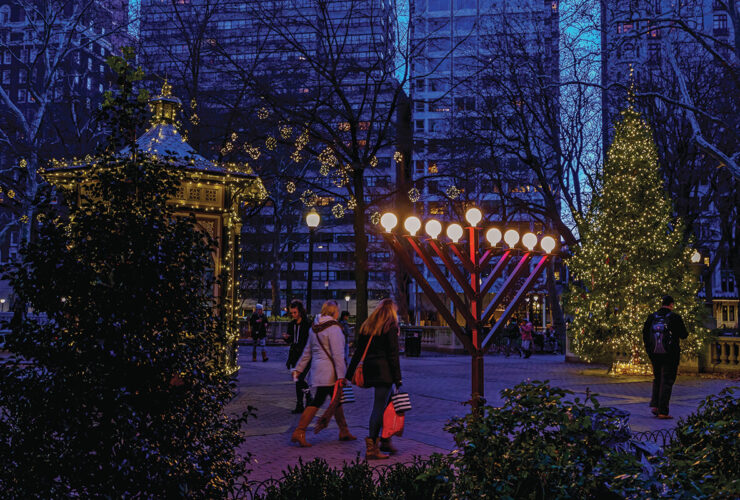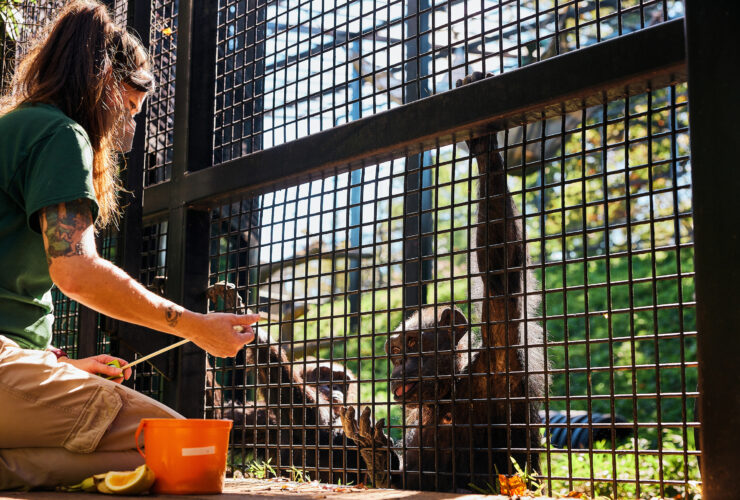
Fall Travel
Field Trips
We round up the region’s best long-weekend getaways that combine fun with history lessons.
At this point, virtually all information is contained on the internet. So sure, you could use Google or YouTube to learn about your region, but nothing beats a physical trip for immersing yourself in a destination. That’s why school kids take field trips, right? To see the room where the Founding Fathers forged a nation. To imagine the fear and determination of escapees on the Underground Railroad. To feel the wind aboard a Chesapeake Bay skipjack. Rekindle your childlike curiosity and refresh your memory of American history with a long weekend at these local-ish destinations. No bag lunches or permission slips required.
ANNAPOLIS:
The Boating, Bay, and Naval Heritage Tour
Maryland's walkable capital city radiates the salty spirit it first earned as a colonial seaport, founded in 1649. Tobacco-laden schooners and oystermen’s workboats are gone from the harbor now, replaced by race boats, sailing yachts, and Chesapeake pleasure craft, plus a bevy of bustling restaurants, bars, and shops worth spending an afternoon in, located just under an hour from Baltimore.

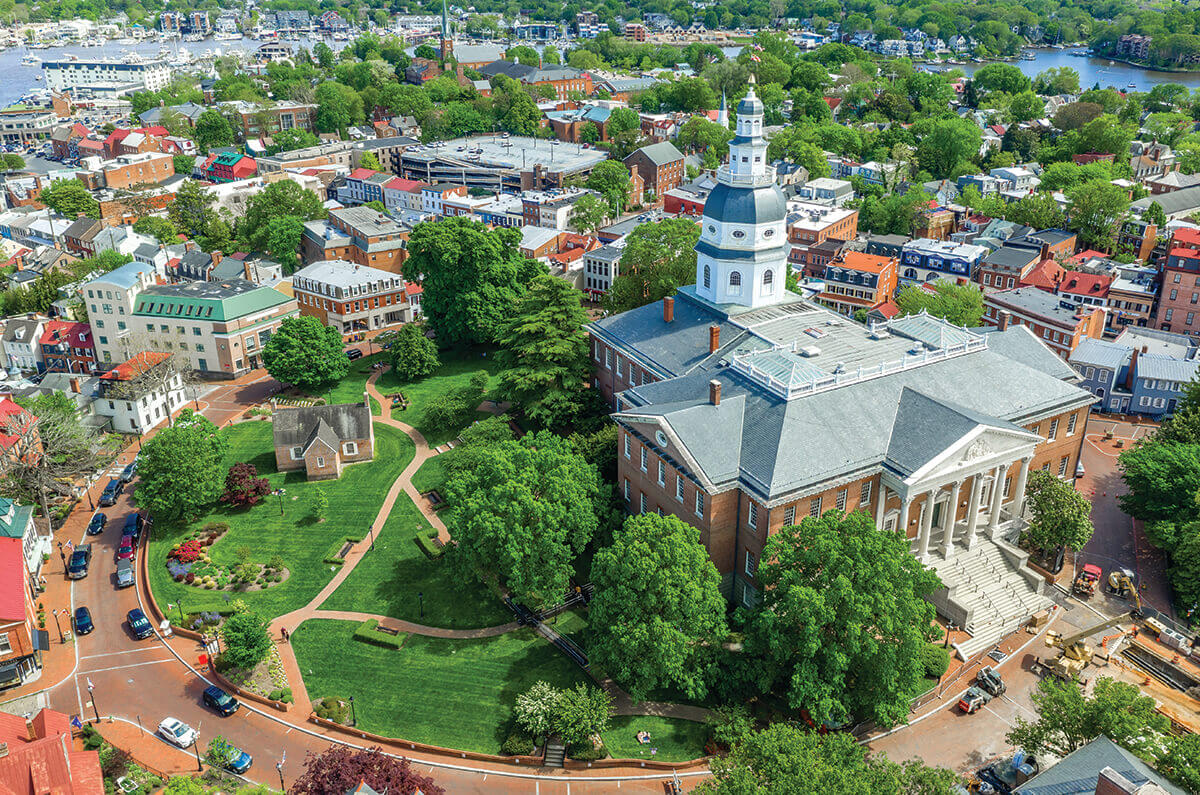
State Circle.
Day 1
Begin your orientation at the wooden-domed Maryland State House, where the Continental Congress once met and the state General Assembly still convenes. The capitol graces State Circle, one of the city’s two hilltop hubs. The other—separated physically and constitutionally—is nearby Church Circle, where St. Anne’s Episcopal parishioners have worshipped since 1692. Explore Chesapeake heritage and ecology at the Annapolis Maritime Museum in the free-spirited neighborhood of Eastport. This small museum in an old oyster-packing plant brims with instructive, entertaining exhibits: a holographic waterman shucking oysters, aquariums depicting the estuary’s changing water quality, virtual reality “rides” in traditional Wednesday night sailboat races. Once the museum closes at 3 p.m., its Back Creek Nature Park campus is perfect for boat- and bird-watching.
Day 2
Start the morning with a java jolt at 1845 Coffee in the U.S. Naval Academy’s historic Gate 3 gatehouse and then visit “the Yard,” aka the training ground for seafaring officers since 1845. Daily 90-minute guided tours explore midshipman life and historic sites like the Tiffany-windowed Chapel, John Paul Jones crypt, and stately Bancroft Hall. And don’t miss the Academy Museum with its incomparable collection of warship models. Spend the afternoon sizing up Annapolis from the deck of one of Schooner Woodwind’s 74-foot cruising sailboats, with advance bookings encouraged. On Wednesday and Saturday nights through September 24, several downtown restaurants participate in Dinner Under the Stars, festive evenings of dining and dancing on string-light-illuminated West Street near Church Circle.
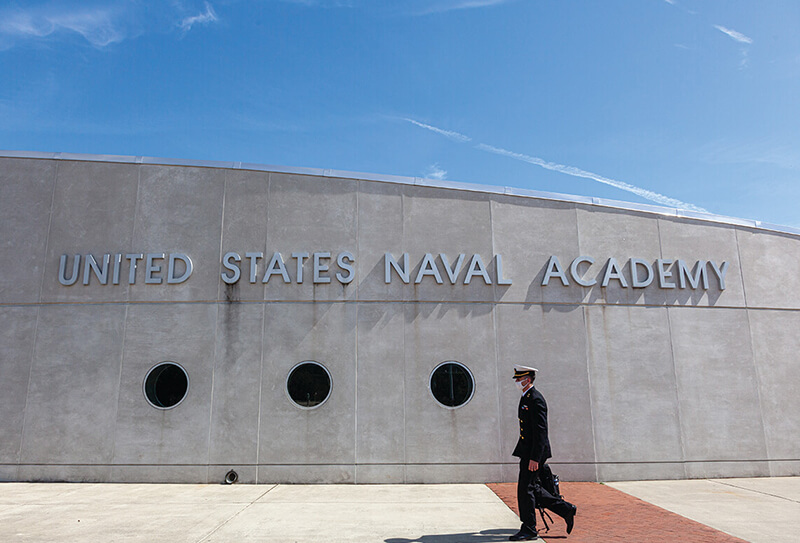
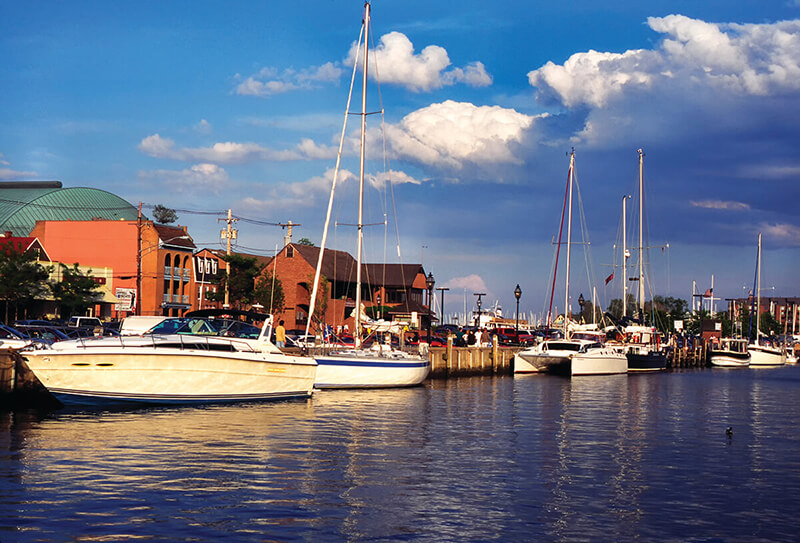
The Naval Academy; Ego Alley.
GETAWAY DAY
If you haven’t already, be sure to boat-gawk at Ego Alley, the playful nickname for Annapolis harbor’s aquatic cul-de-sac, where skippers strut their vessels and vanity. Before heading home, visit Historic London Town and Gardens in Edgewater, site of an 18th-century tavern on South River. On select Thursdays, visitors can concoct and quaff colonial cocktails like syllabubs and toddies.
LODGING & EATS
Built by a Welsh shipwright, the Victorian-era townhouses comprising the Flag House Inn reflect Annapolis history and gentility, with a personal twist—innkeepers fly their guests’ state or national flags. In Eastport, try crab cakes at local nautical hangout Boatyard Bar & Grill. For lunch, make your way to Galway Bay, an Irish pub and whiskey bar, for cabbage wraps and corned beef.
EXTRA CREDIT
Eastport welcomes boating season with a ritual bonfire. What do participants burn?
- bras
- navigational charts
- old life jackets
- stinky socks
ANSWER: d. They torch their unlaundered winter hosiery.
CHARLOTTESVILLE:
BFFs Jefferson and Madison Tour
Our third and fourth presidents owned plantations just 30 miles apart in central Virginia, both of which were slavery-based—something that their tours now grapple with in an extensive and clear-eyed way. You’ll also learn that the two men were equally close politically and personally, though temperamentally, not so much. The diminutive, balding, and deliberative James Madison complemented his towering, crimson-haired neighbor, Thomas Jefferson, a fiery idealist. Charlottesville is about a three-hour drive from Baltimore, but an Amtrak route also affords a more leisurely form of travel.

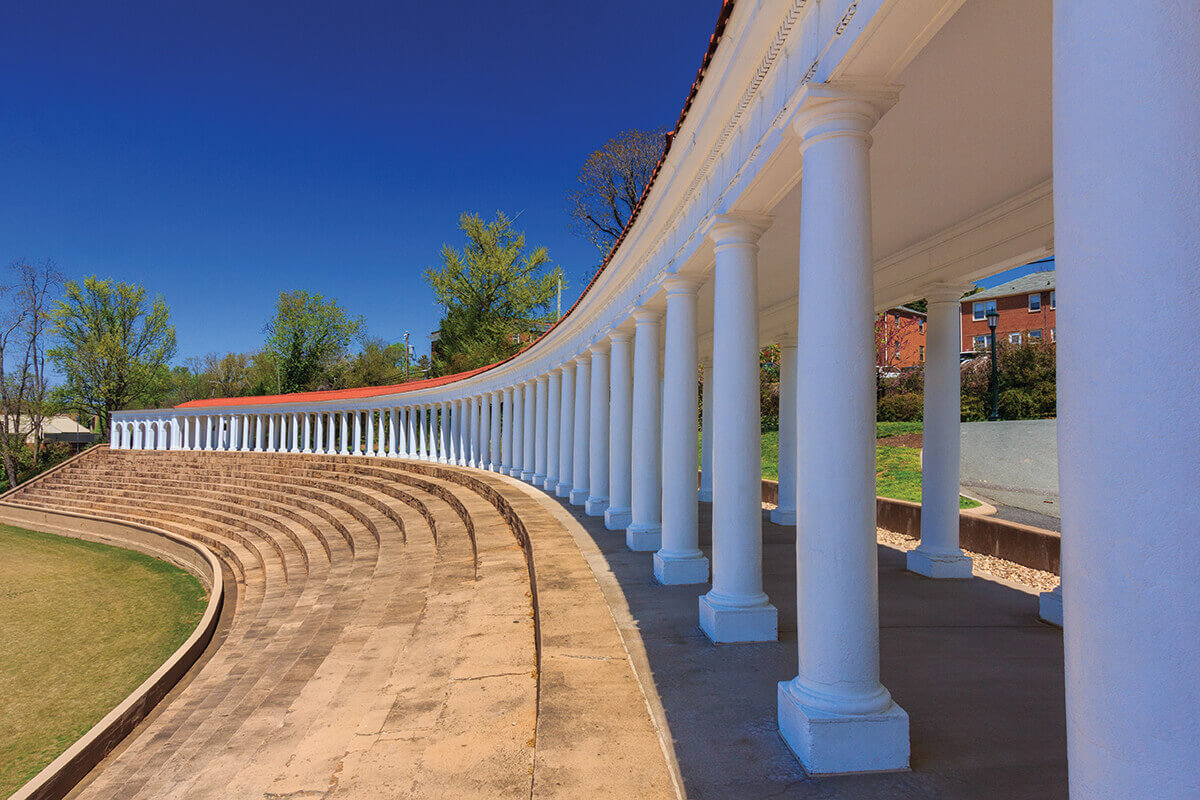
The
Colonnades at Lambeth Field at the University of Virginia.
Day 1
Located near Orange, Virginia, Montpelier was home to the “Father of the Constitution” James Madison and his wife, Dolley, doyenne of Washington society. Allow two hours to tour their Georgian mansion and stroll gardens, old-growth forest, and historic cemeteries across 2,700 acres. Don’t miss the groundbreaking exhibit “The Mere Distinction of Colour.” It tells the story of Montpelier’s enslaved population in artifacts, images, and the haunting words of living descendants while inviting visitors to reflect on present-day inequality. The same Piedmont soils that still yield Montpelier artifacts produce the area’s award-winning wines. Sip some at Barboursville Vineyards, whose historic estate includes the ruins of a Jefferson designed governor’s mansion. Linger for dinner at Palladio, the winery’s elegant Northern Italian restaurant.
Day 2
Head for Monticello, Jefferson’s self-designed, mountaintop estate in Charlottesville. You’ll easily spend half a day—there’s that much to see: the entry’s ingenious Great Clock, Jefferson’s private bed chamber and library, enslaved families’ cabins and workshops on Mulberry Row, and extensive vegetable and flower gardens in which Jefferson practiced experimental agriculture. Guided and self-guided tours explore the home, grounds, and Monticello’s dark legacy of slavery. Monticello is 10 minutes from Charlottesville’s leafy, traffic-free Downtown Mall. Shop, eat, and enjoy live music in the city where the Dave Matthews Band (among others) was born.
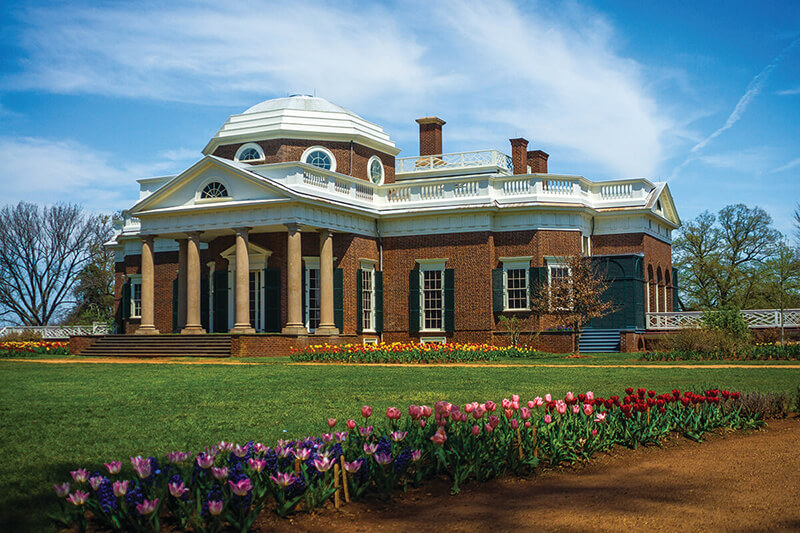

James Madison’s Montpelier; Jefferson’s Monticello.
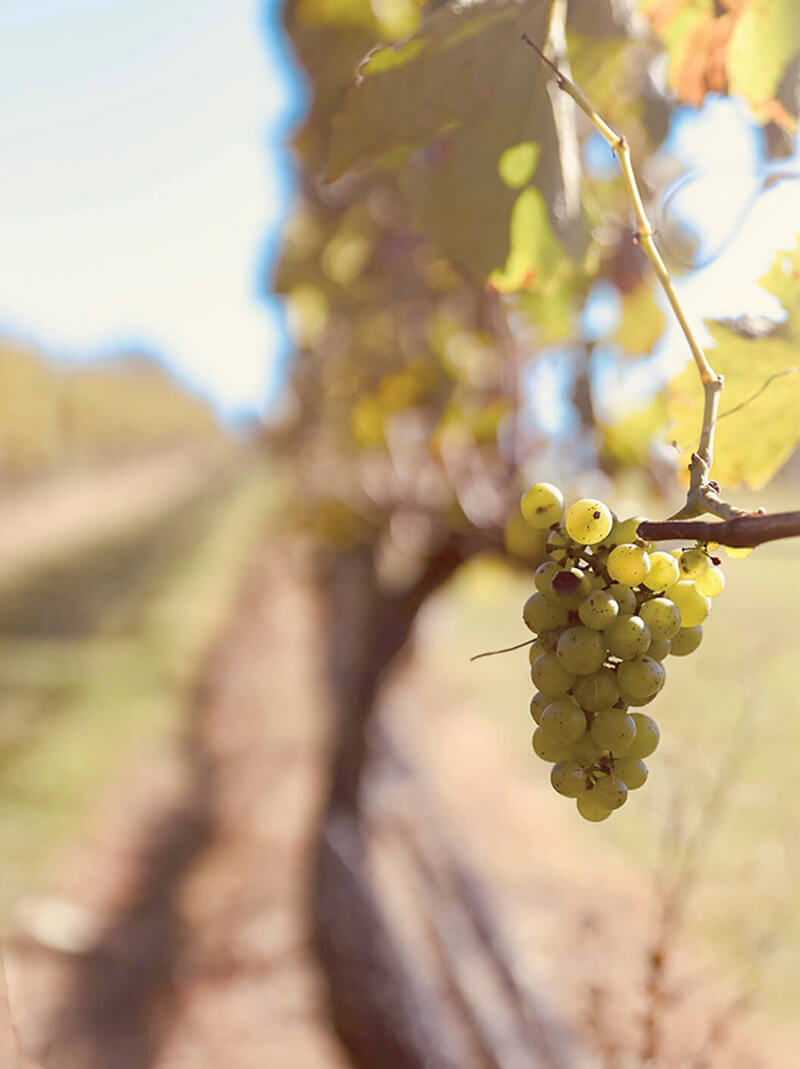
A Virginia vineyard.
GETAWAY DAY
Some retirees play golf. Thomas Jefferson founded the University of Virginia, “the hobby of my old age,” as the man himself once said. With BFF Madison’s input, he conceived the university and dictated its classical design. In fall, UVA students conduct historical tours of their campus. And if you’re not Founding Fathered-out, there’s one more presidential estate in Charlottesville, Highland, home of POTUS number five, James Monroe.
LODGING & EATS
Near Orange, Virginia, the restored, 1770s Inn at Willow Grove is a romantic’s retreat offering luxury suites and cottages; a fine-dining restaurant, Vintage; an on-site spa; and morning delivery of house-made beignets. In Ruckersville, enjoy farm-fresh breakfast or lunch at Jack’s Shop Kitchen, housed in a former tractor showroom. Diners rave about the innovative cuisine at Oakhart Social, a craft food spot in downtown Charlottesville.
EXTRA CREDIT
What colonial cash crop was called “sot-weed”?
- corn
- tobacco
- wheat
- indigo
ANSWER: b. aka “stupid” weed.
DORCHESTER COUNTY:
The Harriet Tubman Legacy Tour
Governor Hogan proclaimed this “The Year of Harriet Tubman” as the state and the nation celebrate the 200th anniversary of the Eastern Shore native’s birth in Dorchester County, about a two-hour drive from Baltimore. Maryland Public Television debuts a Tubman documentary this fall, and area museums tell the story of the woman called “Moses.”

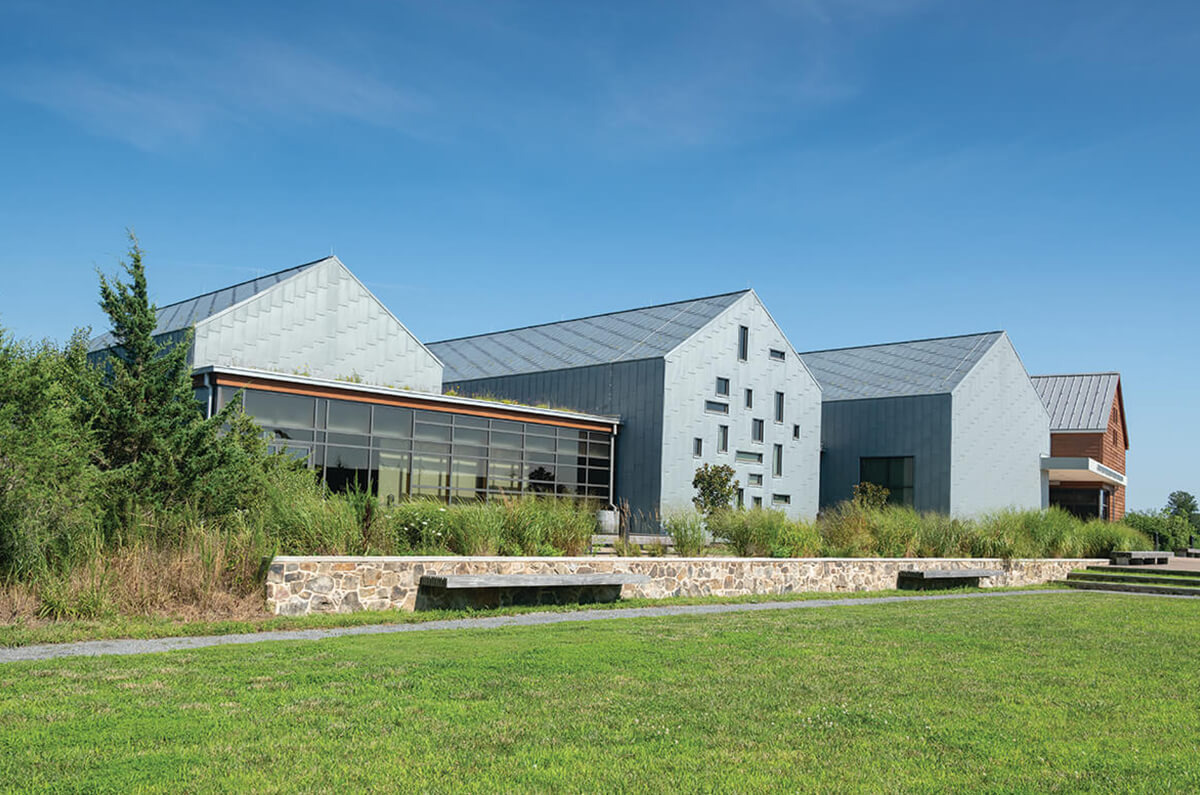
The Harriet Tubman Underground Railroad
State Park and Visitor Center. Photography by Mike Morgan
Day 1
The Harriet Tubman Underground Railroad Byway, a three-state driving tour, traces her escape from Dorchester County servitude to freedom in Philadelphia. It begins, as one should, at Dorchester County Visitor Center in Cambridge. There are Tubman exhibits and helpful staff who’ll point you to the city’s Tubman Memorial Garden, the Harriet Tubman Museum and Educational Center, where a powerful mural depicts the URR conductor offering an outstretched hand, and the once-tragic, now-tranquil Long Wharf Park. A landing and auction site for the slave trade centuries ago, the wharf now features weekend sails on the skipjack Nathan of Dorchester and self-guided tours of the Choptank River Lighthouse, a replica of the original.
Day 2
Spend your day in Tubman territory. She and her enslaved family worked the fields and waters around the current Blackwater National Wildlife Refuge, where her father’s cabin site was recently discovered. Nearby, Harriet Tubman Underground Railroad State Park and Visitor Center honors the legacy of this fearless leader who escorted scores of her friends and family north to freedom. See their story strikingly rendered in Visitor Center exhibits, including a replica of the shed where Tubman hid her brothers prior to their escape. Bring a picnic lunch and stroll the park’s Legacy Garden. Download the free Tubman Byway app to learn about the Bucktown General Store, where an angry overseer grievously injured Tubman, and the Choptank Landing, site of the siblings’ daring escape—both of which you can visit by driving the shore’s backroads.
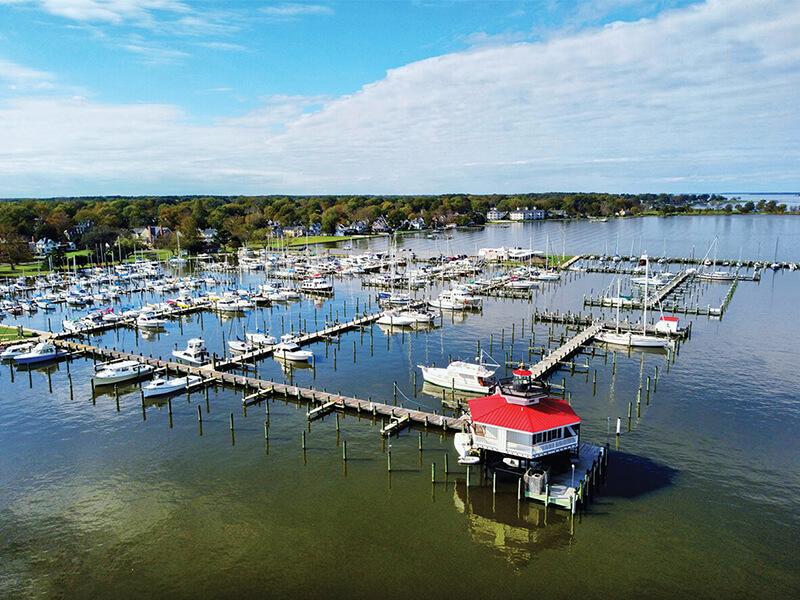
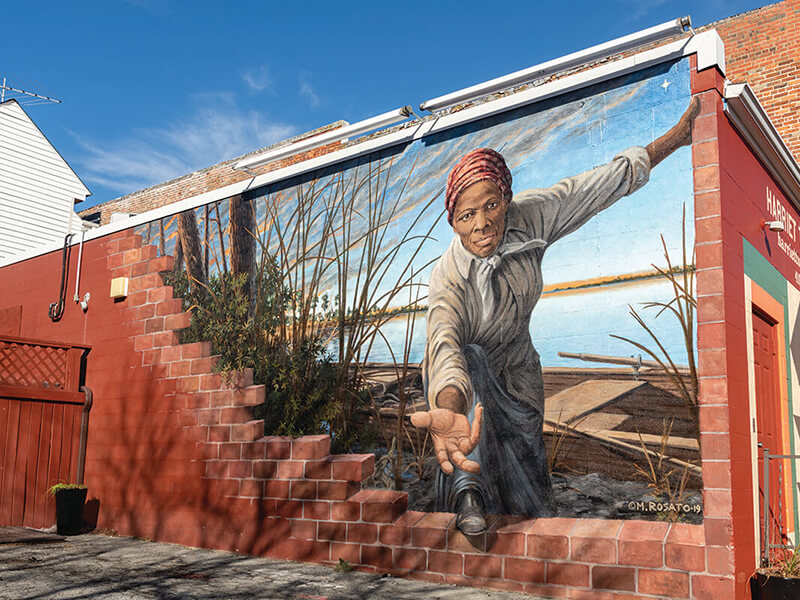
Aerial view of the Choptank
River Lighthouse; a Harriet Tubman mural. Photography by Mike Morgan
GETAWAY DAY
Don’t miss Sunday Gospel Brunch at ArtBar 2.0, an art gallery and event venue at the Tubman mural in Cambridge. Afterward, walk to Dorchester County Courthouse. Here, in 1850, Tubman’s niece dramatically escaped a slave auction with her children. Near the same spot, “The Beacon of Hope,” a towering bronze sculpture of Tubman, is slated to be unveiled this month.
LODGING & EATS
Cambridge House B&B sits on a quiet street just blocks from several Tubman sites plus Cambridge Creek and the Choptank River. Its Dorchester room features a king-size bed and cozy fireplace. For dinner, try Blue Ruin, a Gatsbyesque lounge offering small plates, a large craft cocktails menu, and decadent desserts. Admire Dorchester’s marshy beauty en route to Old Salty’s, an old-school seafood restaurant in the backwaters of Hoopers Island.
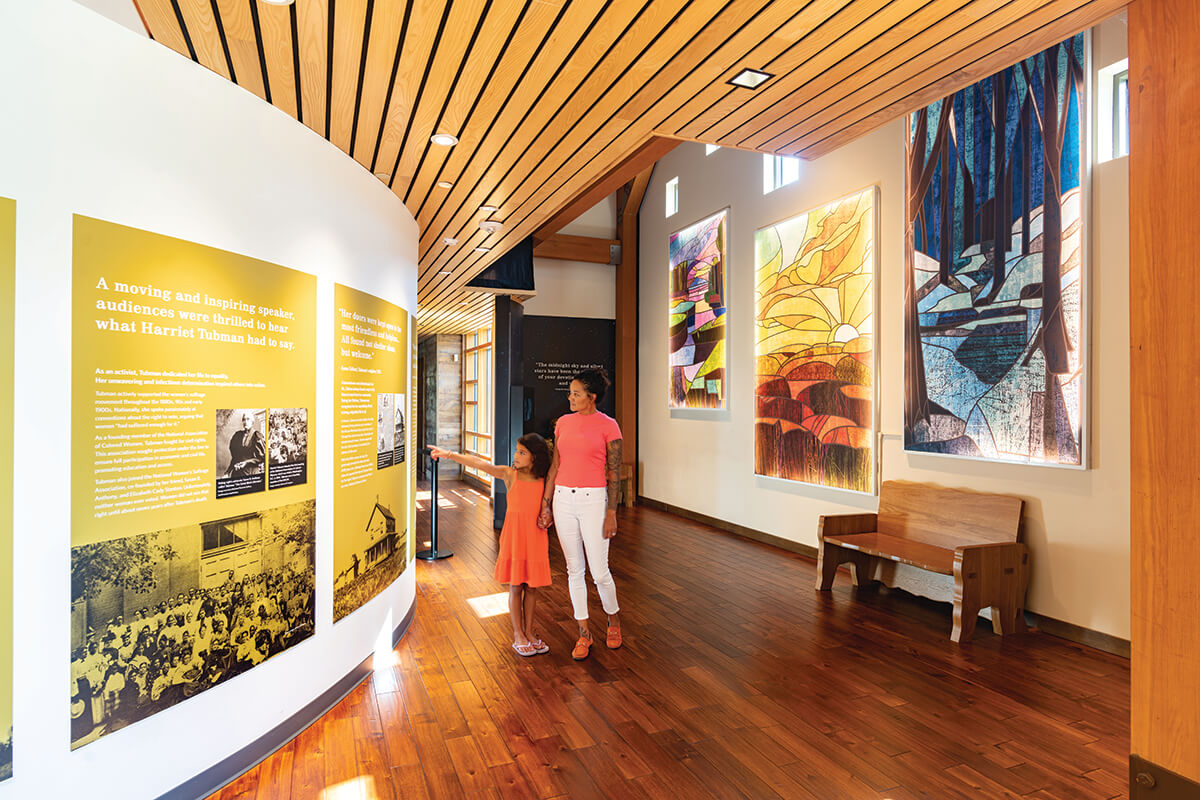
Inside the Harriet Tubman Underground Railroad
State Park and Visitor Center. Photography by Mike Morgan
EXTRA CREDIT
Tubman was an Underground Railroad conductor and which of the following?
- Civil War spy
- Civil War nurse
- Suffrage advocate
- All of the above
ANSWER: d. Tubman the activist never retired.
PHILADELPHIA:
The Cradle of Democracy Tour
In four years, the United States will celebrate the 250th anniversary of its birth. Just about two hours from Baltimore, Philadelphia, democracy’s cradle, will surely become party central. Cheesesteaks, Rocky, and the Phillie Phanatic aside, in visitors’ minds, the City of Brotherly Love’s most enduring—and popular—symbols remain the Liberty Bell and Independence Hall.

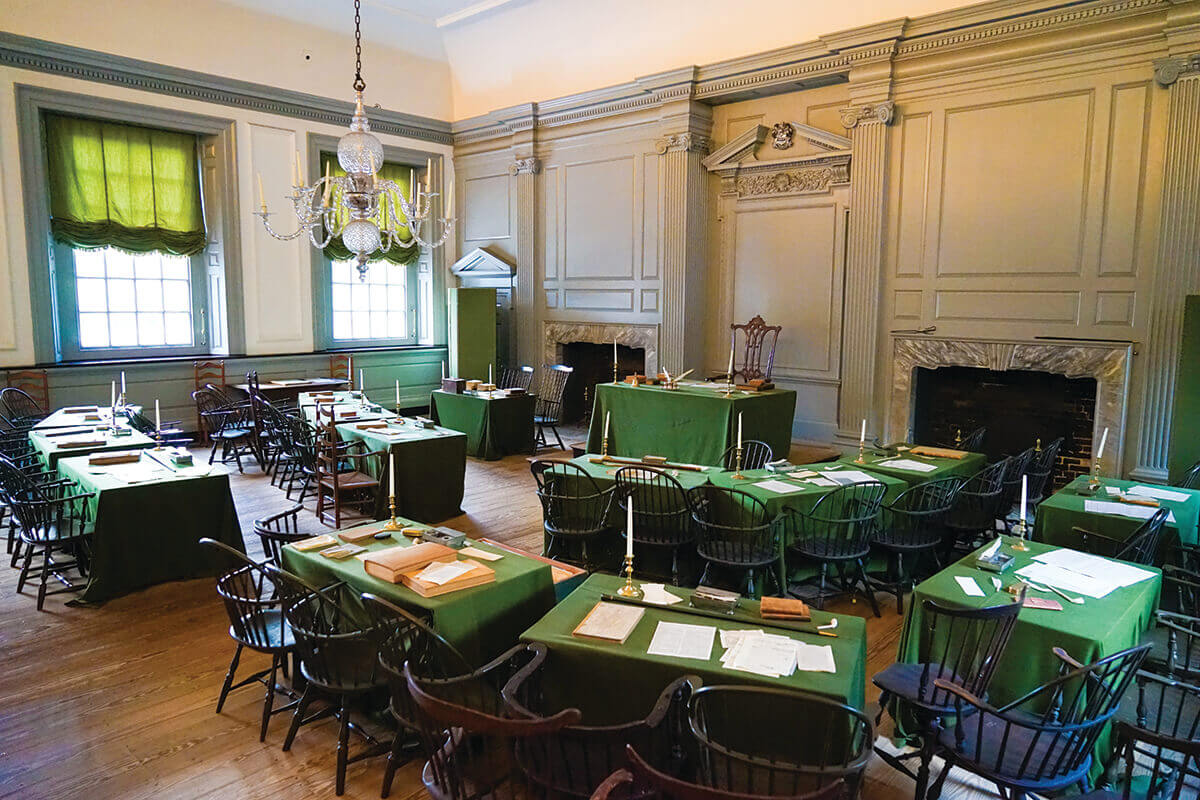
Independence Hall.
Day 1
There are at least as many must-see attractions in the Old City neighborhood of Philly as there were original colonies. Fortunately, these landmarks are concentrated within a walkable area. Get advice and tickets (where needed) at the Independence National Historical Park Visitor Center. The National Constitution Center’s dramatic “Freedom Rising” performance brings the nation’s founding document to life and its life-sized Founding Father bronzes enjoy posing for selfies. Nearby, stroll through Christ Church Burial Ground, final resting place of Benjamin Franklin and four other signers of the Declaration. And don’t miss Elfreth’s Alley, a cobblestone street that looks much as it did three centuries ago. A small museum tells its story.
Day 2
Don’t, as Ben Franklin cautioned, fail to plan. Buy advance tickets for timed-entry tours of Independence Hall. You’ll skip the lines waiting to see where the Declaration of Independence and Constitution were signed. No tickets are needed for the Liberty Bell Center, but fortune favors early birds—it’s first-come, first-admitted. (Passersby can see the bell anytime through the center’s large windows.) Don’t miss Franklin Court, home to the Benjamin Franklin Museum and Printing Office, with its reproduction presses. Philly was temporarily the nation’s capital in the 1790s; tour the President’s House Site, an open-air museum built on the first presidential mansion’s foundation. Guided historical tour options abound: costumed interpreter-led, murder-mystery, ghost, and even a BYOB trek by trolley.
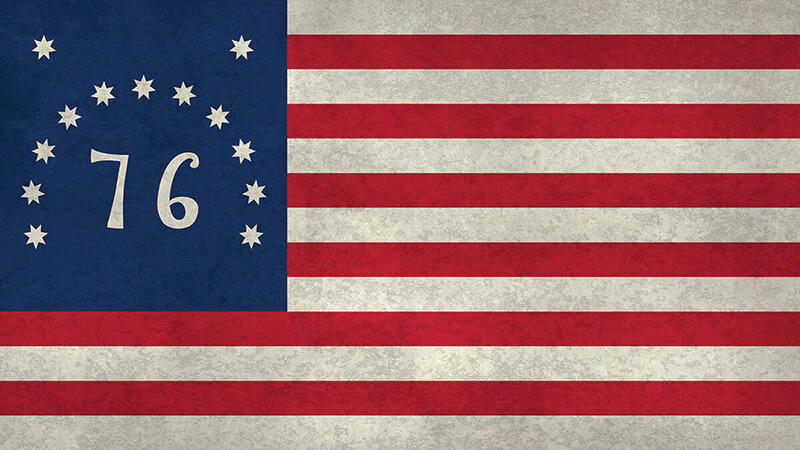
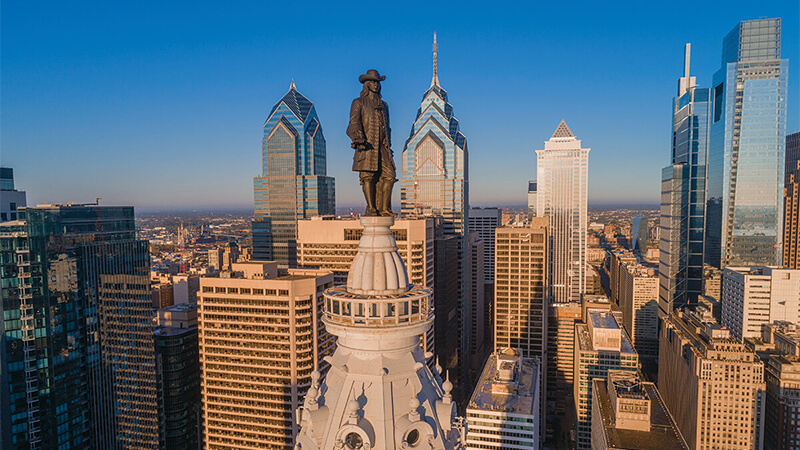
Bennington Flag; Ben Franklin atop Philadelphia’s City Hall.
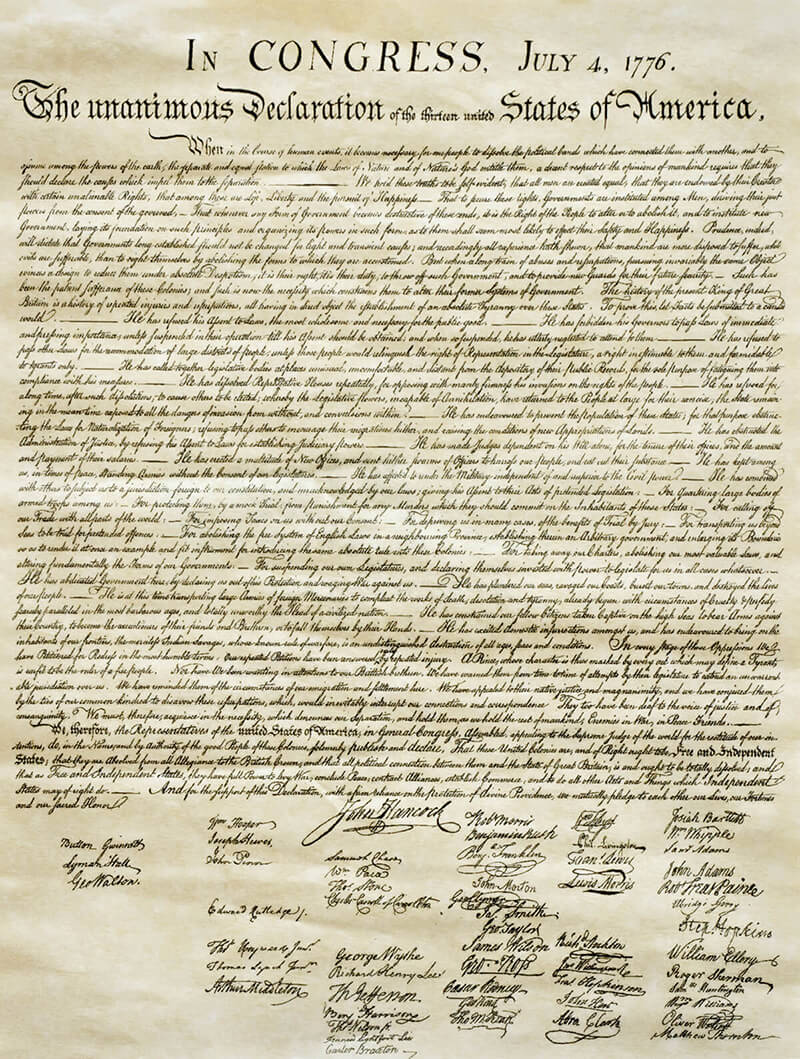
The Declaration of Independence.
GETAWAY DAY
Daring, rebellious, natural leader, and scientific wizard. Benjamin Franklin was all these, as you’ll learn at The Franklin Institute, an enthralling science museum named for the Newton of Electricity. Franklin shares these traits with another role model whose Institute appearance is currently Philly’s hottest ticket: “Harry Potter: The Exhibition,” which takes an immersive tour of the Wizarding World through September 18.
LODGING & EATS
Historical immersion needn’t entail sleeping on corn husks or straw. Boutique Lokal Hotelsoffer stylish, hip, apartment-style suites right in Old City and in trendy, not-too-distant Fishtown. While you’re in town, nosh Philly-style: cheesesteaks at Pat’s in South Philly, sweets at Federal Donuts, anything at Reading Terminal Market. For dinner, Uber over to The Love, a new hotspot from two renowned restaurateurs.
EXTRA CREDIT
What’s the official name of the U.S. 250th anniversary?
- Semiquincentennial
- Quarter Millennium
- Bicenquinquagenary
- Sestercentennial
ANSWER: a. All are technically applicable, but Congress chose Semiquincentennial.
WASHINGTON, D.C.:
The First Americans Tour
An hour drive or MARC train ride from Baltimore, the nation’s capital’s granite memorials, federal buildings, and history museums allegedly host almost as many school kids as Disney World. But what of the Native Americans on whose lands these attractions now stand? Slowly, long overdue recognition of them is growing.

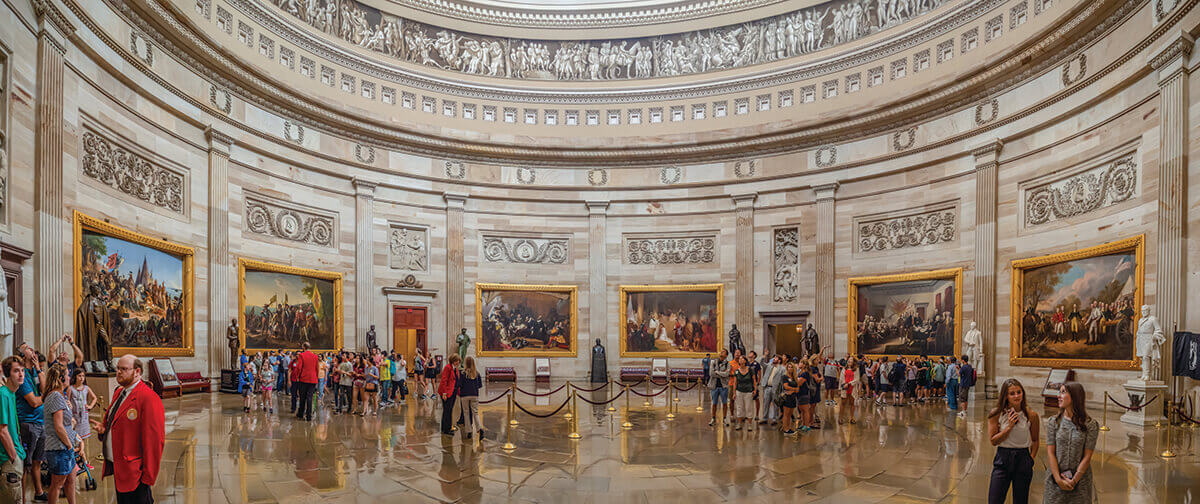
The Capitol Rotunda.
Day 1
Anacostans originally lived on what is now present-day Washington, D.C. The tribe perished, but several sites highlight Native-American history—if you know where to look. Tour the U.S. Capitol (weekdays, reservations required), where the National Statuary Hall’s collection includes eight statues of Indigenous individuals donated mostly by Western states. The oldest (1917) is Sequoyah, inventor of the Cherokee alphabet; the newest (2019) is Chief Standing Bear, whose 1879 court case granted Native Americans standing as “persons” deserving equal rights. In televised Capitol interviews, you’ll often see Cherokee-born Will Rogers’ statue looming over politicians, a group he loved to mock (and, despite this, the pols like to rub the statue’s left shoe for luck). Admire artist George Catlin’s famous Native-American portraits at the Smithsonian American Art Museum.
Day 2
Allow at least two hours to tour the National Museum of the American Indian, one of the Smithsonian Institution’s National Mall museums. Four floors of exhibits and artifacts examine Indigenous history and culture, including the Chesapeake Bay’s Algonquian peoples, several of whose tribes survive today. The powerful “Americans” exhibit examines the co-opting of Native images and stories in American culture. Sample fry bread, empanadas, and more at NMAI’s Mitsitam Native Foods Café, and don’t miss the National Native American Veterans Memorial on the museum grounds. A stirring stainless-steel and stone monument honors current and deceased veterans.
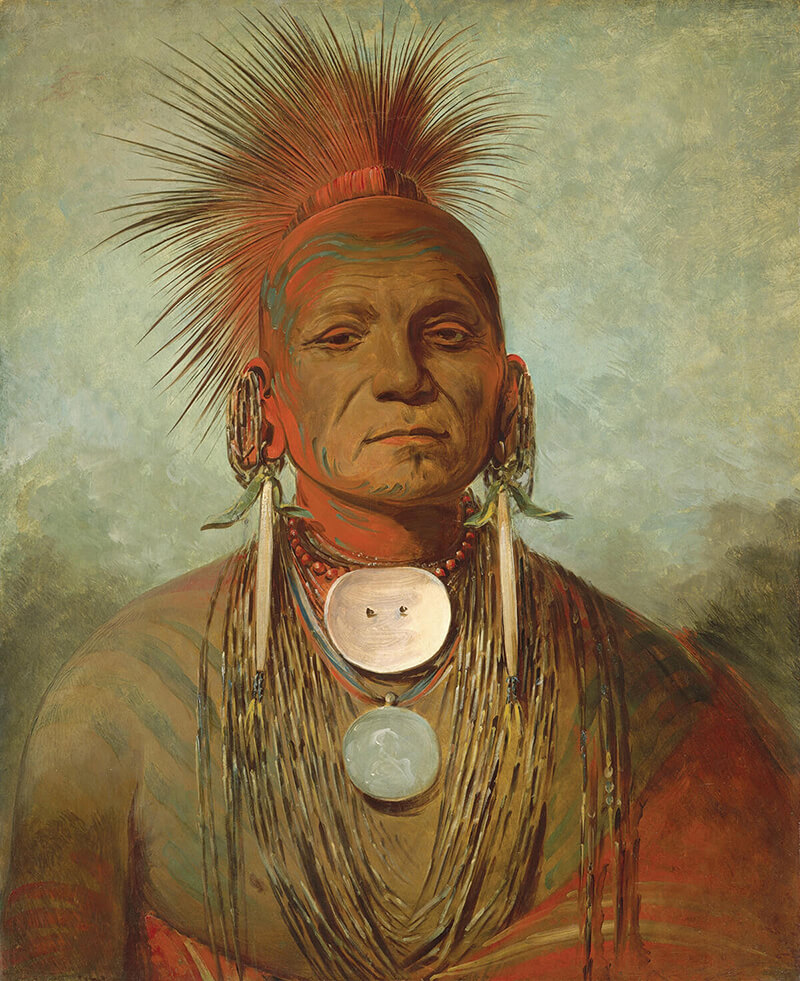
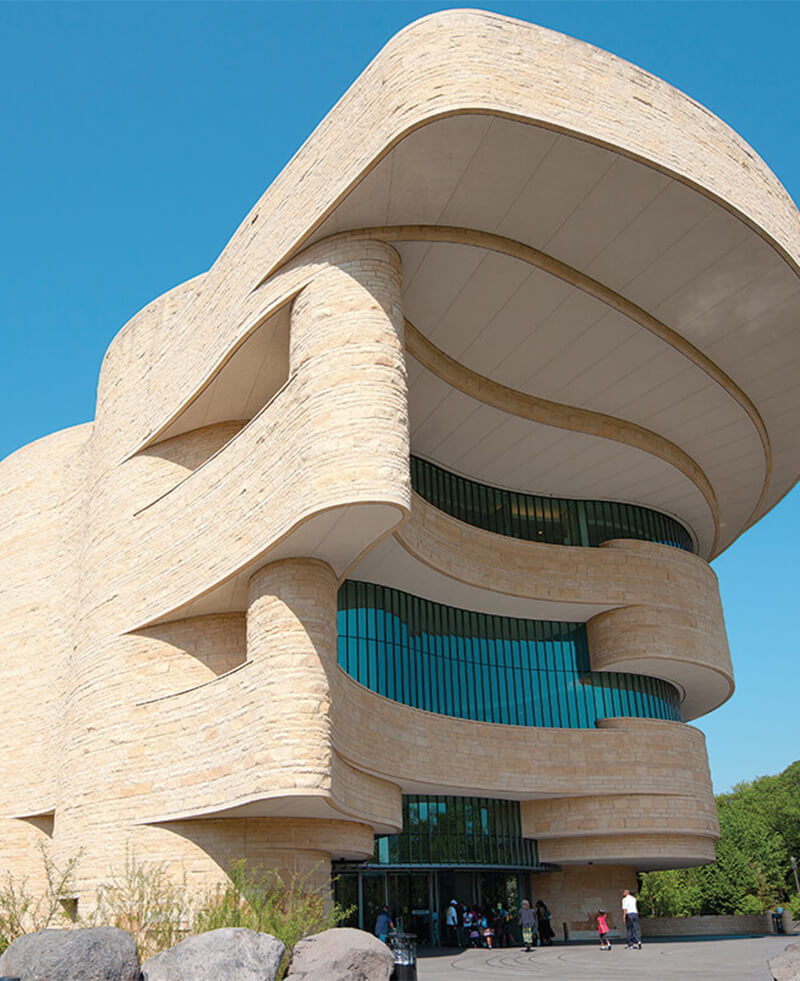
1844 portrait of Iowa Medicine
Man, See-non-ty-a, by painter George Catlin;
The National Museum of the American Indian.
GETAWAY DAY
Visit Capitol Hill’s historic Congressional Cemetery, where the American Indians Walking Tour highlights the gravesites of those who negotiated treaties for their peoples and served the United States in war. Among them is Pushmataha, a Choctaw chief who fought in the War of 1812. Thousands attended his military funeral. The cemetery’s tribal-carved totem-pole arch memorializes victims of the 9/11 attacks.
LODGING & EATS
Eaton DC, a “regenerative travel” hotel, pampers guests with in-room vinyl listening, “happy hour yoga,” a rooftop taco bar, a literary-themed lounge, and the Michelin-caliber Michele’s restaurant. (Ask about the Maryland resident discount.) Near the Smithsonian Art Museum, chef/humanitarian José Andrés’ Zaytinyaserves fabulous mezze meals. Early tribes settled at the intersection of the Potomac and Anacostia rivers, known as Buzzard Point, where you can now enjoy waterfront views and wood-grilled seafood at the acclaimed The Point.
EXTRA CREDIT
Of the following Indigenous tribes whose members live in Maryland, which group is not native to the state?
- Pocomoke
- Lumbee
- Piscataway
- Accohannock
ANSWER: b. Many Lumbees live near Baltimore, but the tribe’s roots are based in North Carolina.
WINCHESTER:
The Civil War Showdown Tour
Troops under Stonewall Jackson, Philip Sheridan, and Jubal Early fought to control the fertile Shenandoah Valley of Virginia during the Civil War, with Winchester, a just under two-hour drive from Baltimore, in the crosshairs. Battles were waged in and near the city, which changed hands more than 70 times.

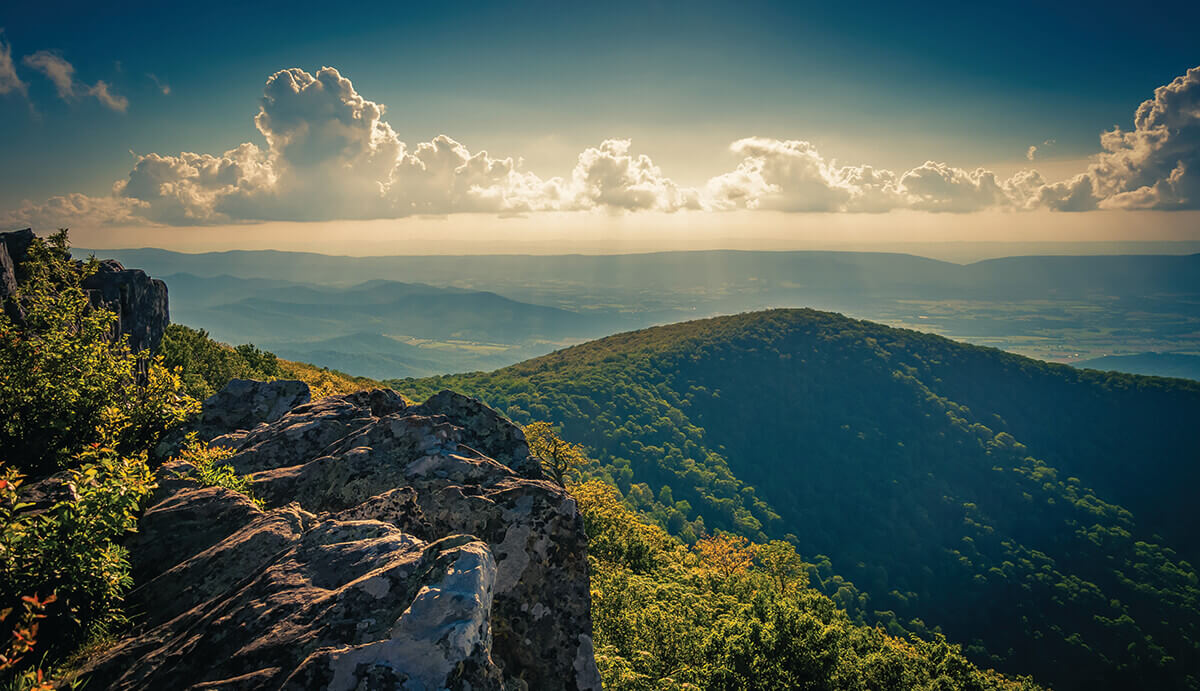
The Shenandoah Valley.
Day 1
At the Winchester Battlefields Visitor Center learn about Shenandoah war lore and battlefields—one right next door. Third Winchester Battlefield Park marks the site of a bloody, see-saw conflict on September 19, 1864, after which Confederate troops ultimately fled the city. Retrace the battle on walking trails or a driving tour whose stops include Winchester National Cemetery and the Shenandoah Valley Civil War Museum. Resting place for thousands of Union soldiers, the cemetery also has monuments dedicated to the fallen. Housed in an 1840 courthouse variously used as a prison, hospital, and barracks, the museum preserves more than 3,000 artifacts and some interesting graffiti, including a soldier’s curse for Confederate leader Jefferson Davis. (It involved ingestion by large sea creatures.)
Day 2
The Shenandoah Valley was strategic turf, both as the Confederacy’s food supplier and its avenue of attack on Washington, D.C. The South held fragile control when Union general Philip Sheridan began his 1864 Valley Campaign. It culminated on October 19 in a pivotal Union victory in the Battle of Cedar Creek. At Cedar Creek and Belle Grove National Historical Park, the park’s Visitor Center and Battlefield Foundation Museum tell the story, from Jubal Early’s daring pre-dawn strike to Sheridan’s famous ride from Winchester that turned imminent defeat into victory. Hike the Morning Attack Trails and Union Earthworks. Tour Belle Grove, the antebellum plantation at the battle’s center, and follow a self-guided driving tour of the battle.
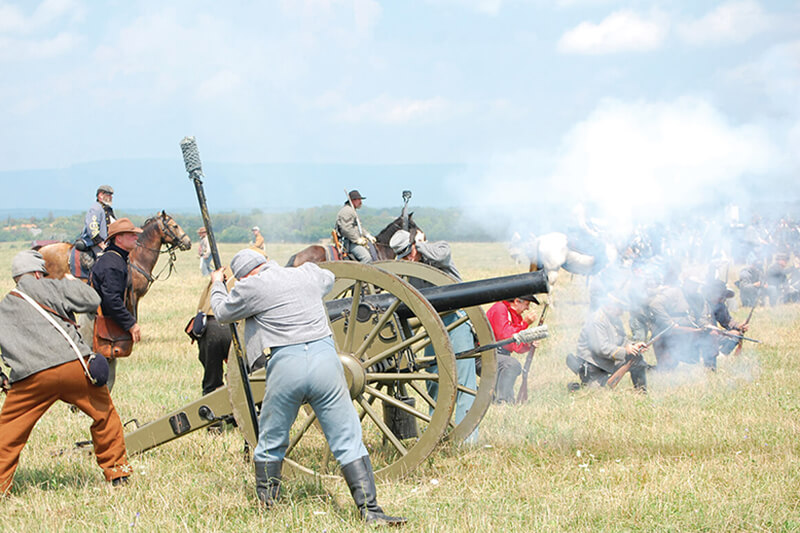
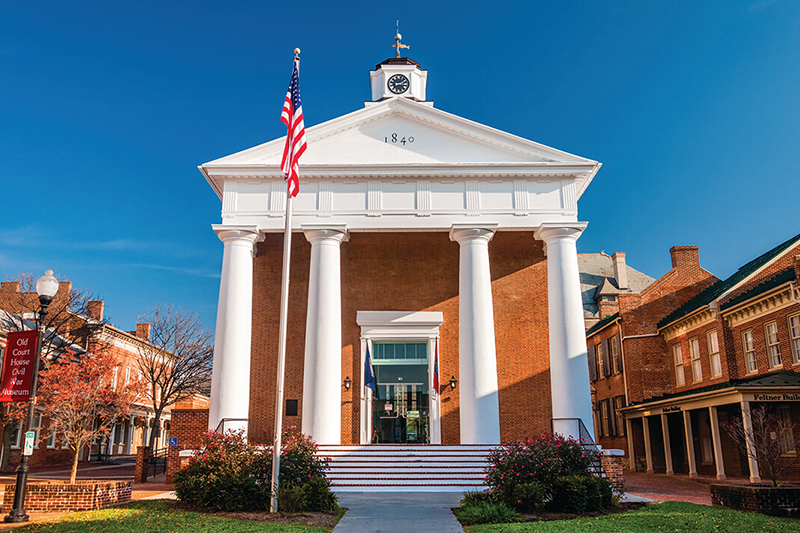
Winchester Battlefield war
re-enactments; the Winchester courthouse.
GETAWAY DAY
Battlefields offer one perspective on the war, personalities another. Exhibits at Stonewall Jackson’s Headquarters in Winchester reveal Jackson as a gifted tactician and devoutly religious Virginian. “Kneading in Silence,” a monthly presentation at Belle Grove Manor House, tells the life story of a plantation cook, Judah, whose early death orphaned her 12 children.
LODGING & EATS
The George Washington, a Wyndham Grand Hotel downtown, features classically styled rooms, onsite dining, a health spa, and an ornate indoor pool evoking a Roman bathhouse. Northerners won here, but Southern cuisine endures. Enjoy the classics—grits, pulled pork, biscuits—at Bonnie Blue Southern Market & Bakery. Or just down the road, savor smoked brisket at Riley’s ChiCorkfish, a BBQ joint in an Exxon station. Try their Texas Twinkies (jalapeños wrapped in smoky bacon).
EXTRA CREDIT
After his celebrated Cedar Creek battle ride, Sheridan renamed his horse. What did he call it?
- Belle Grove
- Rienzi
- Winchester
- Jubalation
ANSWER: c. Originally named for Rienzi, Mississippi, the steed became, fittingly, “Winchester.”
